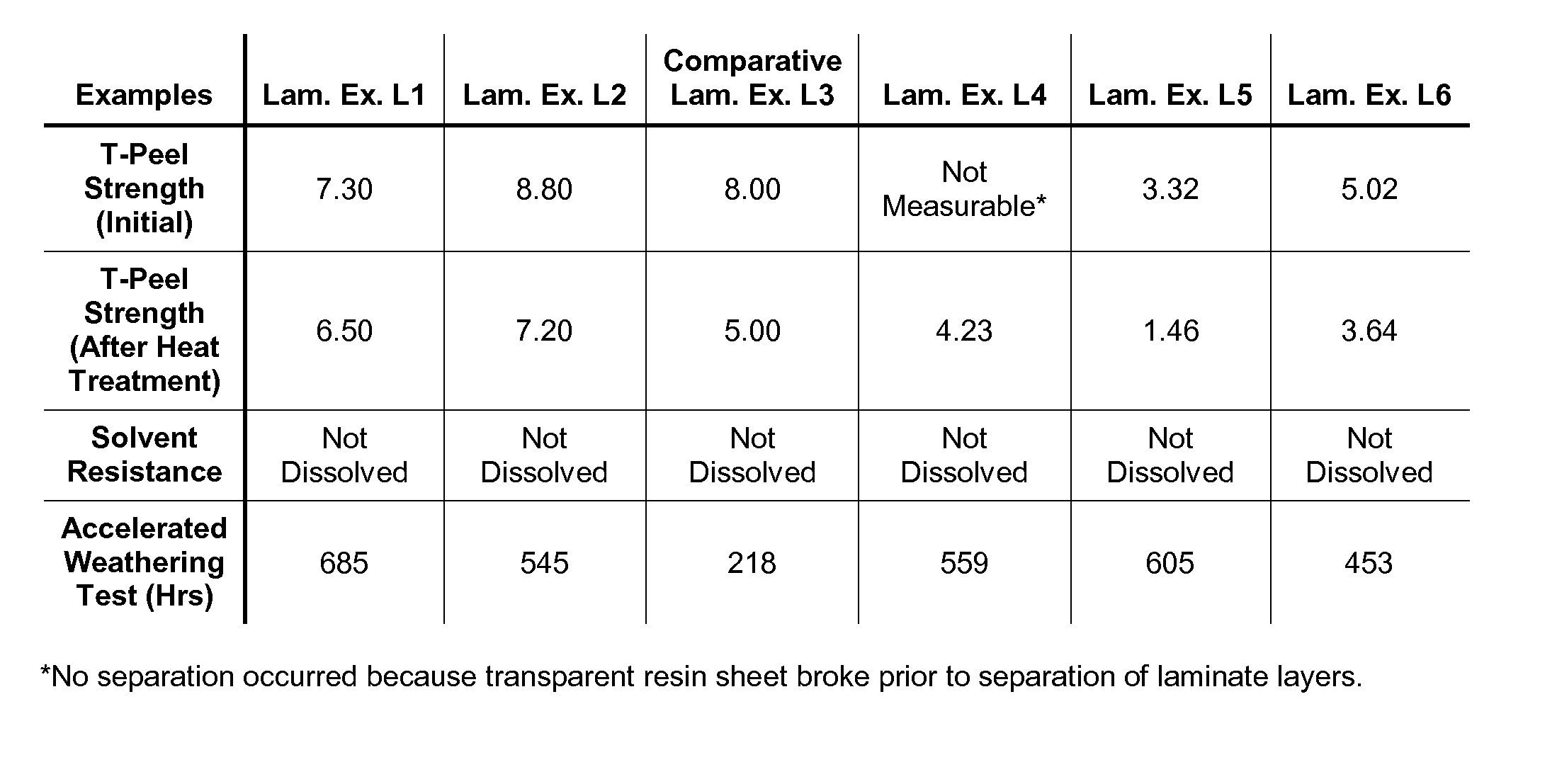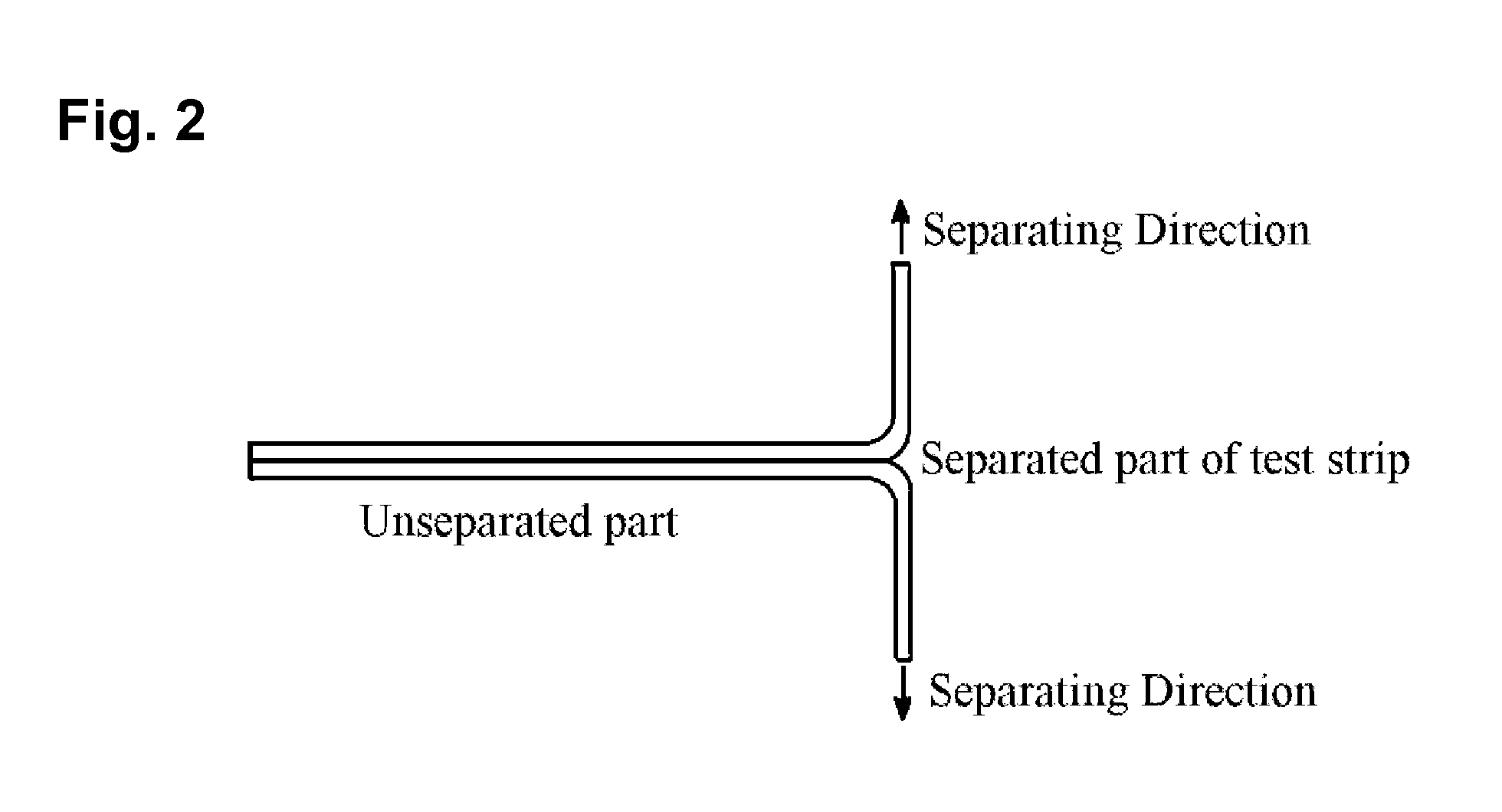Photochromic Polyrethane Laminate
a polyrethane and photochromic technology, applied in the field of photochromic laminates, can solve the problems of affecting the desired surface smoothness, the inability to apply photochromic dyes on the surface of ophthalmic sunglass lenses, and the relatively thick coating on the surface of a segmented lens, etc., to achieve the effect of improving the properties of the layer, improving the mechanical strength, and improving the chemical resistan
- Summary
- Abstract
- Description
- Claims
- Application Information
AI Technical Summary
Benefits of technology
Problems solved by technology
Method used
Image
Examples
synthesis example 1
[0056]40.5 grams (0.041 equivalents) of a polycarbonate diol having an OH number of 56 milligrams KOH / gram and a number average molecular weight of about 2000 gram / mole (available from Asahi Kasei as AK5652) was preheated in an oven to 70 degree Celsius and charged to a 0.5 liter reactor. Also, 72.4 grams (0.137 equivalents) of a polycarbonate diol having an OH number of 112 milligrams KOH / gram and a number average molecular weight of about 1000 gram / mole (available from Asahi Kasei as AK4691) was preheated in an oven to 70 degree Celsius and added to the reactor. 40 grams of anhydrous Tetrahydrofuran, THF, was added into the reactor and stirred well, before adding 47.1 grams (0.356 equivalents) of 4,4′-dicyclohexylmethanediisocyanate (H12MDI, available from Bayer as Desmodur W) into the reactor at ambient temperature. The mixture was stirred well, and then 0.08 grams of dibutyltin dilaurate catalyst (available from Air Products as T-12) was added. The mixture was allowed to stir fo...
synthesis example 3
[0058]A 0.5 liter rector was charged with 64.83 grams (0.163 equivalents) of a polycarbonate diol having an OH number of 141.1 milligrams KOH / gram and a number average molecular weight of about 800 gram / mole (available from Asahi Kasei as G3450J). 71.48 grams of THF was then added to dissolve the diol, followed by adding 43.14 grams (0.326 equivalents) of 4,4′-dicyclohexylmethanediisocyanate (H12MDI, available from Bayer as Desmodur W) into the reactor at ambient temperature. The mixture was stirred until homogenous. 0.54 grams of dibutyltin dilaurate catalyst (available from Air Products as T-12 and diluted into 5% solution with THF) was added to the mixture to initiate the reaction. The mixture was stirred for about 30 minutes. The reactor was purged with nitrogen, sealed and aged at room condition for 4 days.
[0059]To the above solution was added 146.93 grams (0.163 equivalents) of 5% solution of 1, 4-butanediol in THF followed by the addition of 2.62 grams of THF. The reaction so...
synthesis example 4
[0061]A 0.5 liter rector was charged with 144.0 grams (0.362 equivalents) of a polycarbonate diol having an OH number of 141.1 milligrams KOH / gram and a number average molecular weight of about 800 gram / mole (available from Asahi Kasei as G3450J). 158.86 grams of THF was then added to dissolve the diol, followed by adding 95.87 grams (0.725 equivalents) of 4,4′-dicyclohexylmethanediisocyanate (H12MDI, available from Bayer as Desmodur W) into the reactor at ambient temperature. The mixture was stirred until homogenous. 1.2 grams of dibutyltin dilaurate catalyst (available from Air Products as T-12 and diluted into 5% solution with THF) was added to the mixture to initiate the reaction. The mixture was stirred for about 30 minutes. The reactor was purged with nitrogen, sealed and aged at room conditions for 4 days.
PUM
| Property | Measurement | Unit |
|---|---|---|
| photochromic | aaaaa | aaaaa |
| Photochromic | aaaaa | aaaaa |
| temperatures | aaaaa | aaaaa |
Abstract
Description
Claims
Application Information
 Login to View More
Login to View More - R&D
- Intellectual Property
- Life Sciences
- Materials
- Tech Scout
- Unparalleled Data Quality
- Higher Quality Content
- 60% Fewer Hallucinations
Browse by: Latest US Patents, China's latest patents, Technical Efficacy Thesaurus, Application Domain, Technology Topic, Popular Technical Reports.
© 2025 PatSnap. All rights reserved.Legal|Privacy policy|Modern Slavery Act Transparency Statement|Sitemap|About US| Contact US: help@patsnap.com



